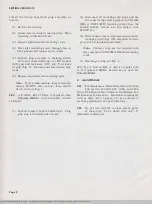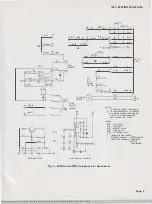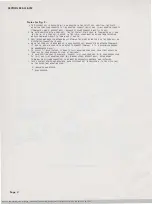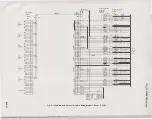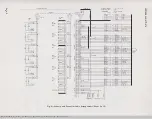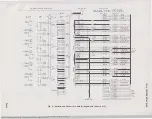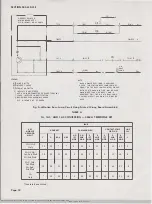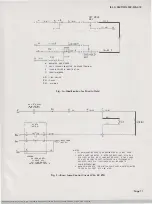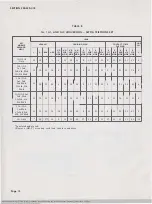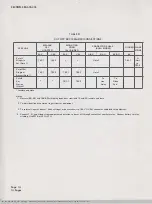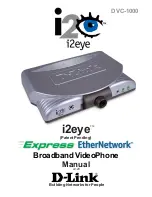
BELL SYSTEM PRACTICES
AT&TCo Standard
SECTION 502-610-418
Issue 4, March 1975
SERVICE
636CA AND 637DA TELEPHONE SETS
I.
GENERAL
1 .01
This section contains connection and maintenance
information for 636CA (18-button) and 637DA
(30-button) CALL DIRECTOR® telephone sets
equipped with headset jacks.
1.02
This section is reissued to:
•
Revise 3.03
•
Add information on D-180463 Kit of Parts,
2.08 and Fig. 3
2.
CONNECTIONS
2.01
These sets are factory-wired for use with
1A1, 1A2, or 6A KTS line circuits. They
may also be used with 1A KTS line circuits by
modifying the set as shown in Table A and B.
Line circuits for 1A, 1A1, or 1A2 KTS may be
connected to the same set under the following
conditions:
(a) 1A1 or 1A2 KTS lines must be connected
to the first key units with 1A lines connected
to supplementary key modules.
(b) 1A, 1A1, or 1A2 KTS lines should not be
connected to the same 6 line key module.
(c) 1A, 1A1, or 1A2 KTS lines appearing behind
a m a n u a l s w i t c h b o a r d s h o u ld n o t b e
intermixed o n a CALL DIRECTOR telephone set
due to the different time out intervals provided
by the associated KTU's.
2.02
The 636CA and 637DA sets are equipped
with a 635A5C (5-line pickup and hold) or
635AD5C (4-line pickup, cutoff, and hold) key in
the first module position. Contact strip assemblies
[required with sets equipped with a D120K (MD)
or D200S (MD) mounting cord] differ between the
two keys. If ordered for field replacement, the
635AD5C is furnished with a piggy-back adapter
to which the slate mounting cord plug is connected.
The necessary contact strip assemblies (840151039
and 840151047) will be shipped with the 635AD5C
key, and will replace the 840151120 and 840151138
assemblies supplied with the 635A5C key.
2.03
Because of the physical arrangement of the
635-type key, the contact strips do not extend
to the chaining switch. This requires a second tip
and ring to each module (except the last). See
Fig. 2, sheets 1 through 5.
2.04
Mounting cords of these CALL DIRECTOR
sets terminate in individual plugs connected
to the rear of the keys. This permits rearrangement
of line appearance either in the set or at the key
equipment distribution point. Current production
sets are equipped with a satin-silver ( -87) mounting
cord.
2.05
All line key positions are convertible to
signaling or common signaling arrangements
by removing the P-28E773 screw detail from key
positions involved and making the necessary wiring
changes per Table C.
2.06
These sets are not intended for use with
3-type speakerphone systems.
2.07
The 636CA and 637DA telephone sets are
factory-equipped with a KS-20419L1 (10 volt
AC only) buzzer.
2.08
When station busy lamp feature is required
with these sets having 1A1 or 1A2 KTS line
circuits, there are two optional circuits available.
The busy lamp(s) will light whenever a line pickup
button is depressed and the handset is off-hook or
the headset is plugged into the jacks. This optional
equipment must be ordered separately. If more
than one busy lamp is required, a 6C KTU must
be connected as shown in Fig. 5. For a single
busy lamp, •install a D-180463 Kit of Parts (ordered
separately), consisting of a P-90D033 Printed Wiring
Board Assembly and 840361836 plug assembly (light
beige).. Connect kit of parts as shown in Fig. 3.
©
American Telephone and Telegraph Company,
1975
Printed in U.S.A.
Page
I
BSP 502-610-418-i04_1975-03-0l.jpg Scanned by Frank Harrell, (Cowboy Frank) Castle Rock, Colorado Feb 04,2012 14:33:52


